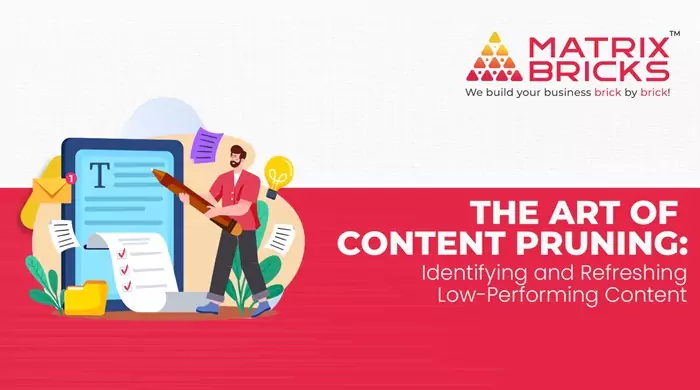
In the ever-evolving realm of digital marketing, content is king. However, not all content is created equal. As your website grows and matures, some pieces may lose their relevance, fail to drive traffic, or simply underperform compared to newer, more optimized content. This is where the art of content pruning comes into play. Content pruning involves the strategic removal, consolidation, or refreshing of underperforming content to improve overall site quality, user experience, and SEO performance. In this article, we’ll explore the importance of content pruning, how to identify low-performing content, and best practices for revitalizing your content strategy.

Why Content Pruning Matters
Enhanced User Experience:
Outdated or irrelevant content can clutter your website, making it difficult for users to find what they’re looking for. By pruning low-performing content, you streamline navigation, improve site structure, and create a more enjoyable browsing experience for your audience.
Improved SEO Performance:
Search engine optimization prioritize fresh, high-quality content when ranking websites. By removing or updating outdated content, you signal to search engine algorithms that your website is current and relevant, potentially boosting your visibility and organic search traffic.
Resource Optimization:
Maintaining a large volume of underperforming content requires valuable resources in terms of time, effort, and server space. By pruning irrelevant or redundant content, you free up resources that can be allocated towards creating new, impactful content or optimizing existing assets.
Identifying Low-Performing Content
Traffic Analysis:
Use web analytics tools such as Google Analytics to identify pages with low traffic or high bounce rates. Pages that consistently fail to attract visitors may indicate content that is no longer relevant or engaging to your audience.
Keyword Performance:
Review the performance of individual keywords and phrases associated with your content. Pages that rank poorly for target keywords or receive minimal organic search traffic may benefit from content pruning or content optimization.
Engagement Metrics:
Analyze engagement metrics such as time on page, scroll depth, and social shares to gauge user interest and interaction with your content. Pages with low engagement metrics may indicate content that needs to be refreshed or removed.
Content Age:
Consider the age of your content when assessing its performance. Older content may become outdated over time, particularly in fast-paced industries or those subject to frequent changes and updates.
Best Practices for Content Pruning and Refreshing

Prioritize High-Impact Pages:
Focus your pruning efforts on pages with the lowest performance metrics and highest potential for improvement. This may include outdated blog posts, product pages with low conversion rates, or landing pages with high bounce rates.
Update and Repurpose Content:
Rather than outright deleting underperforming content, consider updating and repurposing it to better align with current trends, industry standards, or user preferences. This could involve adding new information, refreshing visuals, or optimizing for relevant keywords.
Consolidate Similar Content:
Identify overlapping or redundant content on your website and consolidate it into comprehensive, authoritative resources. This not only improves the user experience by reducing clutter but also consolidates link equity and strengthens your website’s topical relevance.
Redirect or Remove Outdated Content:
For content that no longer serves a purpose or aligns with your current strategy, consider implementing 301 redirects to relevant pages or removing it entirely. Be sure to update internal links and sitemaps to reflect these changes and avoid broken links.
Monitor and Measure Results:
Track the impact of your content pruning efforts over time through ongoing monitoring and analysis. Monitor changes in traffic, engagement metrics, and search engine rankings to assess the effectiveness of your strategy and make adjustments as needed.
Conclusion
Content pruning is a critical aspect of effective content management and website maintenance. By regularly assessing and refreshing your content inventory, you can improve user experience, enhance SEO performance, and maximize the impact of your digital marketing efforts. Whether through updating, consolidating, or removing underperforming content, the art of content pruning empowers you to cultivate a leaner, more relevant content strategy that resonates with your audience and drives sustainable growth in the competitive online landscape.





